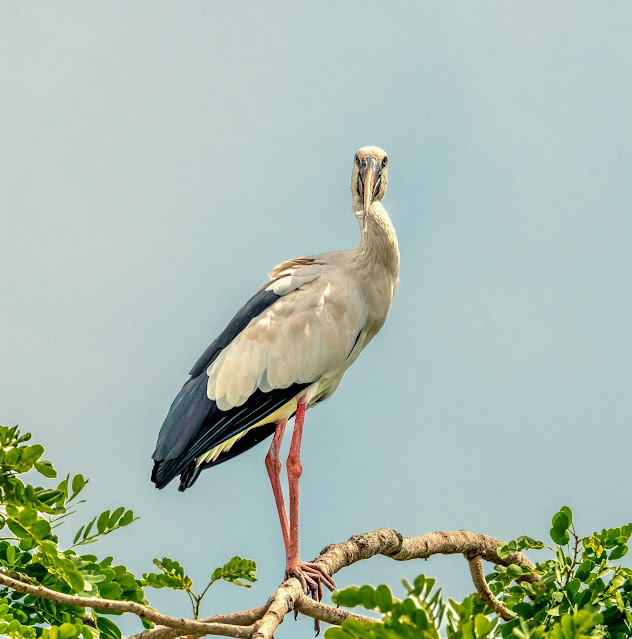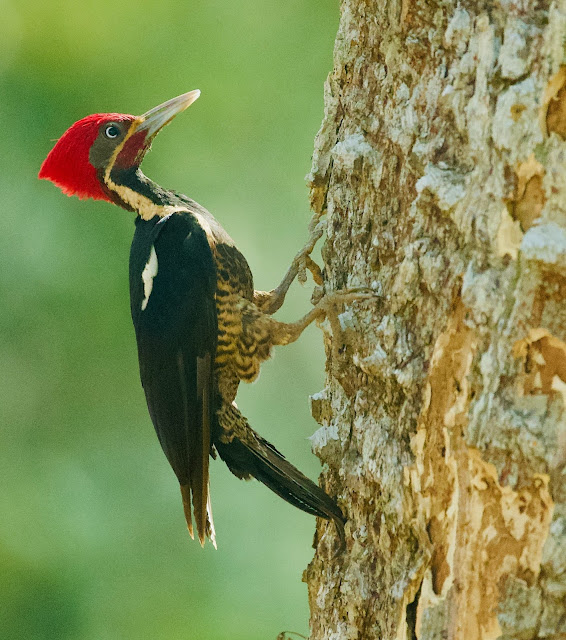Symbol of Beauty The Enigmatic Hoopoe Bird
Sociable Fliers The Fascinating Group Behavior of Asian Openbill Birds
Asian Openbill Bird (Anastomus oscitant)
Introduction:
Physical Characteristics
Habitat:
Feeding Behavior
Social Behavior
Breeding and Conservation
Asian Openbill Bird History
Evolution and Classification
Taxonomic Discovery
Feeding Behavior and Adaptations
Cultural Significance
Ecological Importance
Conservation Concerns
Graceful Guardian The Enchanting Little Egret
Little Egret Bird
Little Egret Bird History
Trogons Bird Nature's Living Jewels
Trogon Birds
Trogon Birds History
Colorful Pheasant of The Himalayas Satyr Tragopan
Satyr Tragopan
Satyr Tragopan History
The Journey of the Asian Koel
Asian Koel
Asian Koel History
The Enigmatic Mottled Wood Owl-Nighttime Sentinel of the Forest
Mottled wood owl
Mottled wood owl history
Thrush Beautiful Songbird
Graceful Melodist: The Thrush bird, with its slender body and elegant demeanor, captivates both the eyes and ears. Known for its beautiful melodic songs, this avian artist fills the air with enchanting tunes that echo through forests and gardens.
Nature's Songstress: The Thrush Bird is a remarkable singer, possessing a rich and melodious voice that brings life to the surroundings. Its vibrant repertoire of trills, warbles, and whistles creates a symphony of sounds that resonates through the trees.
A Feathered Maestro: With its impeccable vocal control and melodious notes, the Thrush bird displays incredible musical prowess. Its songs are characterized by a delightful combination of sweet melodies and intricate patterns, making it a true maestro of the avian world.
Muted Elegance: Cloaked in soft hues of brown and gray, the Thrush bird exudes understated elegance. Its subtle plumage, adorned with delicate speckles and patterns, allows it to blend seamlessly with its natural surroundings, making it a master of camouflage.
Forest Dweller: The Thrush bird is often found amidst lush greenery, seeking refuge in the depths of forests and woodlands. It's agile movements and dainty hops enable it to forage for insects, berries, and earthworms among the leaf litter, displaying its adeptness in navigating its habitat.
Nesting Artisan: With meticulous care, the Thrush bird constructs its nest with twigs, leaves, and moss, weaving them together into a sturdy cup-shaped structure. Hidden among the foliage, its nest becomes a safe haven where the bird tends to its precious eggs until they hatch.
Seasonal Migrant: Some species of Thrush birds undertake remarkable journeys as seasonal migrants, traveling across vast distances in search of favorable climates and abundant food sources. Their presence in different regions marks the arrival of seasons and adds to the allure of birdwatching.
Nature's Pest Controller: Thrush birds play an important ecological role by helping to control insect populations. Their diet primarily consists of insects and invertebrates, making them valuable allies in maintaining the delicate balance of ecosystems.
Resilient Survivor: Thrush birds have displayed remarkable adaptability and resilience in the face of changing environments. Their ability to thrive in various habitats, from dense forests to urban parks, showcases their versatility and survival instincts.
A Serenade in Flight: Watch in awe as the Thrush bird takes to the skies, gliding and fluttering with grace. Its wings, adorned with distinctive patterns and flashes of color, create a mesmerizing sight as it soars through the air, adding an element of beauty to the natural landscape.
Thrush Bird History
A Symbol of Island Diversity
Andaman woodpecker
The Andaman Woodpecker (Dryocopus hodgei) is a fascinating bird species found exclusively in the Andaman and Nicobar Islands in the Bay of Bengal, India.
Striking Appearance: The Andaman Woodpecker is a visually captivating bird. It has a predominantly glossy black body with distinct white barring on its wings and underparts. The head is adorned with a striking crimson crest, adding a splash of vibrant color to its overall appearance.
Impressive Size: This woodpecker is known for its relatively large size compared to other woodpecker species. It measures around 30 to 35 centimeters in length, making it a notable and prominent bird.
Distinctive Features: The Andaman Woodpecker has a robust body with a strong, chisel-like bill that is perfectly adapted for pecking and drilling into tree trunks. It has strong feet with sharp claws that enable it to cling to vertical surfaces while foraging for food.
Forest Dweller: The Andaman Woodpecker primarily inhabits dense evergreen forests, making its home among the towering trees of the Andaman Islands. It is highly skilled at climbing, hopping, and maneuvering along tree trunks and branches in search of food.
Foraging Behavior: This woodpecker has a specialized diet consisting of insects, grubs, beetle larvae, and other small invertebrates found beneath the bark of trees. It uses its powerful bill to drill into the wood, creating holes to extract its prey.
Vocalizations: The Andaman Woodpecker communicates through a variety of calls and drumming sounds. Its calls include sharp, high-pitched notes that serve as territorial calls and for maintaining contact with its mate.
Endemic Species: The Andaman Woodpecker is a unique and endemic bird species, meaning it is found exclusively in the Andaman and Nicobar Islands. Its restricted range and specialized habitat make it a prized sighting for birdwatchers and nature enthusiasts.
The Andaman Woodpecker is a remarkable bird with its captivating appearance, powerful foraging capabilities, and status as an endemic species of the Andaman Islands.
History
The Andaman Woodpecker (Dryocopus hodgei) is a bird species that is native to the Andaman and Nicobar Islands in the Bay of Bengal, India. The history of the Andaman Woodpecker is closely tied to the unique ecosystems and geographical isolation of the Andaman Islands.
Endemic to the Andaman Islands: The Andaman Woodpecker is endemic to the Andaman and Nicobar Islands, which means it is found exclusively in this region and nowhere else in the world. The bird has adapted to the specific environmental conditions and resources available on the islands.
Geological Isolation: The Andaman and Nicobar Islands have been geographically isolated for millions of years, separated from mainland India by a deep ocean trench. This isolation has led to the evolution of numerous endemic species, including the Andaman Woodpecker.
Adaptation to Island Habitats: Over time, the Andaman Woodpecker has adapted to the unique forested habitats found on the islands. It has developed specialized skills for climbing trees, excavating wood, and foraging for food within the dense forests.
Conservation Status: The Andaman Woodpecker is classified as a species of "Least Concern" on the IUCN Red List, indicating that it is not currently facing any significant threats to its survival. However, like many other bird species, it may face challenges such as habitat loss due to deforestation or disturbance.
Research and Conservation Efforts: The Andaman Woodpecker, as a unique endemic species, has attracted the attention of researchers and conservationists. Studies on its ecology, behavior, and population dynamics have been conducted to better understand and protect the species and its habitat.
Overall, the Andaman Woodpecker's history is intertwined with the natural history and ecology of the Andaman and Nicobar Islands. Its evolution and adaptation to this isolated island environment highlight the fascinating biodiversity of the region and the importance of conserving its unique species.
The Graceful Majesty of the Mute Swan
Mute Swan
Appearance
Mute Swans are the largest species of swan and possess a majestic appearance. They have long, S-shaped neck that often curve gracefully. Their plumage is primarily white, with adults having a distinct orange-reddish bill and a black knob at the base of their bill. Their legs and feet are black. Younger birds, known as cygnets, have grayish-brown feathers and a grayish-pink bill, which gradually becomes orange as they mature.
Size
Mute Swans are among the largest flying birds, with males (known as cobs) typically measuring between 55 to 63 inches (140 to 160 cm) in length and weighing around 20 to 30 pounds (9 to 13.6 kg). Females (known as pens) are slightly smaller, measuring between 50 to 57 inches (127 to 145 cm) in length and weighing around 15 to 25 pounds (6.8 to 11.3 kg).Behavior
Habitat
Diet
Conservation Status
History
Ancient Symbolism
Mute Swans have been revered and symbolized in various ancient cultures. They held significant symbolism in Greek and Roman mythology, representing beauty, grace, and love. Mute Swans were associated with deities such as Aphrodite, the Greek goddess of love, and Venus, the Roman goddess of beauty.Domestication and Ornamental Use
Mute Swans were likely domesticated in ancient times for their ornamental value. Historical records suggest that they were kept in captivity by ancient Egyptians and Romans, primarily for their aesthetic appeal in gardens and parks. They were highly prized for their elegance and grace.Royal Ownership and Protection
Mute Swans became closely associated with royalty and nobility during the Middle Ages in Europe. In England, Mute Swans were declared the property of the Crown under the "Act of Swans" in the 12th century, granting exclusive ownership to the British monarch. This tradition continues today, and the British Crown still retains ownership of all unmarked Mute Swans on certain stretches of the River Thames.Introduction to North America
Mute Swans were introduced to North America in the late 19th and early 20th centuries. They were brought over from Europe and released into parks, estates, and water bodies for their aesthetic appeal. Over time, some Mute Swan populations became established and expanded their range in parts of North America.Conservation and Management
The status of Mute Swans has been a topic of discussion and management efforts in various regions. In some areas, their increasing populations and potential impact on native waterfowl and habitats have raised concerns. Conservation and management measures have been implemented to monitor and control Mute Swan populations in certain locations.Current Status
Mute Swans are now found in different parts of the world, both in their native range and as introduced populations. They continue to be admired for their beauty and grace, often regarded as iconic symbols of elegance in the avian world.
It's important to note that while the Mute Swan has a rich history and cultural significance, it is also an important species in terms of conservation and ecological impact, requiring careful management to ensure the preservation of native habitats and wildlife populations.
Symbol of Beauty The Enigmatic Hoopoe Bird
Hoopoe Birds The Hoopoe (Upupa epops) is a striking and distinctive bird known for its unique appearance and enchanting behaviors. Exquisit...

















.jpeg)















